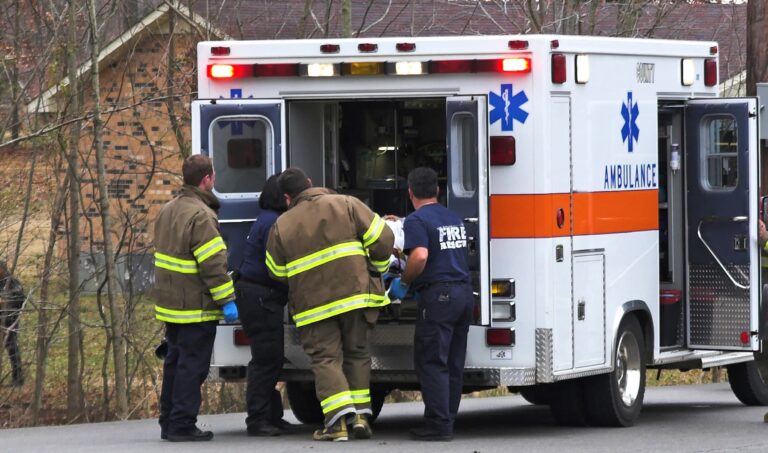MIAMI – According to a survey released Wednesday by the National Safety Council and the Emergency Responder Safety Institute, 71 percent of U.S. drivers take photos or videos when they see an emergency vehicle on the side of the road responding to a fire or a crash, or simply making a routine traffic stop.
Sixty percent post to social media, and 66 percent send an email about the situation — all while behind the wheel.
Those distracting behaviors are markedly less frequent, but still alarming, during normal driving conditions — 24 percent of drivers surveyed said they take photos or video while driving, 29 percent admitted to using social media and 24 percent said they send email.
Worse still, 16 percent — more than 1 in 10 — said they either have struck or nearly struck a first responder or emergency vehicle stopped on or near the road. In spite of all this, 89 percent of drivers say they believe distracted motorists are a major source of risk to first responders.
NSC is releasing the survey during Distracted Driving Awareness Month, observed every April to raise awareness and educate about the importance of being attentive behind the wheel. Funding for the survey was provided to the Cumberland Valley Volunteer Firemen’s Association through the FEMA Fire Prevention and Firefighter Safety Grant Program.
“The cruel irony is, we are putting the people who are trying to improve safety in very unsafe situations,” said Nick Smith, interim president and CEO of the National Safety Council. “Our emergency responders deserve the highest levels of protection as they grapple with situations that are not only tactically difficult but also emotionally taxing. Save your communications for off the road; disconnect and just drive.”
Thousands die each year in distracted driving crashes, though National Safety Council investigations show these crashes are significantly underreported and undercounted. Emergency responders are particularly vulnerable, because they exit their vehicles and tend to situations on active roadways. In 2013, 37 people died in crashes involving ambulances, fire trucks or police cars, and an additional 17,028 were injured. Since January, 16 emergency responders have been struck and killed by vehicles. Sadly, 49 percent of survey respondents said possibly being struck by a vehicle is “just part of the risk” of being a first responder.
“The Emergency Responder Safety Institute was born 21 years ago following the tragedy of two highway incidents that took the lives of first responders who were struck while helping others,” said Greg Yost, President of the Cumberland Valley Volunteer Firemen’s Association, parent organization of the Emergency Responder Safety Institute. “Because of distracted driving, we’ve been focusing our efforts on educating drivers who are often not paying careful enough attention when passing emergency scenes. In 2019, already 16 responders have lost their lives and many others have been injured in these types of crashes,” he said.
Other important findings from the poll include:
- 19 percent of drivers admit their own inattentive driving has probably put first responders at unnecessary risk
- Despite being willing to engage in risky behaviors while driving around emergency vehicles, 62 percent say they are “above average” drivers when passing an emergency vehicle with its lights flashing on the side of the road
- 24 percent do not realize that there are legal requirements for what drivers must do when they see an emergency vehicle on the side of the road
- Even though 97 percent say they will see an emergency vehicle if it has its flashing lights on, 74 percent would still like responders to wear reflective clothing
- 80 percent of drivers say they slow down to get a better look when they see an emergency response vehicle tending to a fire, crash or traffic stop. Doing so backs up traffic and creates other safety hazards.
- Encouragingly, 67 percent have heard of “Move Over” laws and 73 percent say they move over when they see an emergency vehicle stopped on the side of the road with its lights on – the proper response on nearly all roadways
“Those that serve the public are exposed to a number of risks, including risks from those that they serve,” said I. David Daniels, chair of the NSC Government and Public Sector Division, which initiated the NSC-ERSI partnership. “These two organizations’ joint efforts will most certainly help increase safety for public sector workers and reduce communities’ costs incurred from vehicle crashes involving public employees.”
The Trucker News Staff produces engaging content for not only TheTrucker.com, but also The Trucker Newspaper, which has been serving the trucking industry for more than 30 years. With a focus on drivers, the Trucker News Staff aims to provide relevant, objective content pertaining to the trucking segment of the transportation industry. The Trucker News Staff is based in Little Rock, Arkansas.









Emergency response vehicles warning “beacons” are part of the problem of distraction; These vehicles have way too many blinding lights, especially to large trucks where drivers eye level is 8 feet above the pavement; The intensity & focus of these “Star Wars laser shows” needs to be studied & redesigned; This “overkill” of annoying strobes actually makes it harder or impossible to see the workers; When drivers see a light of “any” color, they tend to suddenly decelerate & cause traffic backup unnecessarily…